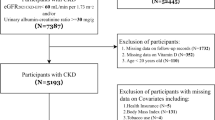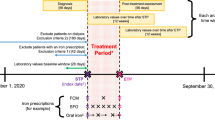Abstract
The objectives of this study are to evaluate trace elements in patients with liver cirrhosis and to assess their association with severity of the disease. One hundred fifty cirrhotic subjects of either sex ranging in age from 20–70 years were included in the study, and the results were compared with 50 age- and sex-matched healthy control subjects. All cirrhotic subjects were assessed for severity of disease as mild (Child A), moderate (Child B), and severe (Child C) as per Child-Pugh classification. Routine investigations were done and trace elements (Cu, Zn, Se, and Mg) were analyzed on atomic absorption spectrophotometer. Serum level of copper was found significantly increased in patients with liver cirrhosis as compared to control group. Whereas serum zinc, selenium, and magnesium levels were significantly decreased in cirrhotic subjects as compared to controls. Trace elements were compared with severity of liver cirrhosis. Serum copper concentration was slightly increased in patients with more severe clinical state of liver cirrhosis; however, mean level difference of copper among the Child-Pugh groups were statistically not significant. Moreover, there was no significant correlation between copper and Child-Pugh Score. However, copper showed a significant negative correlation with zinc. Serum zinc, magnesium, and selenium levels were significantly decreased with advancement of liver disease as compared to early stage of liver cirrhosis and showed a significant negative correlation with Child-Pugh Score. Trace element abnormalities may reflect the condition of liver dysfunction. These results suggest that liver dysfunction may alter the metabolism of trace elements. Our study shows that micronutrients status in liver cirrhosis correlates well with severity of liver cirrhosis. Micronutrients supplementation in liver cirrhotic patients may prevent progression of disease and development of complications; however, further research needs to be done.




Similar content being viewed by others
References
Sarin SK, Maiwall R et al (2012) Global burden of liver disease: a true burden on health sciences and economies. World Gastroenterol Organ 17(2)
Guha NI, Iredale JP et al (2007) Clinical and diagnostic aspects of cirrhosis. In: Textbook of hepatology from basic science to clinical practice, p 604–622
Kolachi NF, Kazi TG, Afridi HI, Kazi NG, Khan S (2012) Investigation of essential trace and toxic elements in biological samples (blood, serum and scalp hair) of liver cirrhotic/cancer female patients before and after mineral supplementation. Clin Nutr 31:967–973
Lin CC, Huang JF, Tsai LY, Huang YL (2006) Selenium, iron, copper, and zinc levels and copper-to-zinc ratios in serum of patients at different stages of viral hepatic diseases. Biol Trace Elem Res 109:15–24
Goldhaber SB (2003) Trace element risk assessment: essentiality vs. toxicity. Regul Toxicol Pharmacol 38:232–242
Raoufa AA, Radwanc GS, Konsowab HA, Sirab AM, Ibrahimc NL (2013) Serum zinc, copper, and iron in children with chronic liver disease. Egypt Liver J 3:63–72
Speich M, Pineau A, Ballereau F et al (2001) Minerals, trace elements and related biological variables in athletes and during physical activity. Clin Chim Acta 312(1–2):1–11
Truong-Tran AQ, Ho LH, Chai F, Zalewski PD (2000) Cellular zinc fluxes and the regulation of apoptosis/gene-directed cell death. J Nutr 130(5S Suppl):1459S–1466S
Rahelic D, Milan K’I et al (2006) Serum concentration of zinc, copper, manganese and magnesium in patients with liver cirrhosis. Coll Antropol 30(3):523–528
Safaralizadeh R, Kardar GA et al (2005) Serum concentration of Selenium in healthy individuals living in Tehran. Nutr J 4:32. doi:10.1186/1475-2891-4-32
Czuczejko J, Zachara BA et al (2003) Selenium, glutathione and glutathione peroxidases in blood of patients with chronic liver diseases. Acta Biochim Pol 50:1147–1154
Garcia-Tsao G et al (1985) Histological-hemodynamic correlation in cirrhosis—a histological classification of the severity of cirrhosis. Am J Physiol 249:G549–G556
EASL (2009) Clinical Practice Guidelines. Management of cholestatic liver diseases European Association for the Study of the Liver. J Hepatol 51:237–267
Bavdekar A, Bave S et al (2002) Nutrition management in chronic liver disease. Indian J Pediatr 69:427–431
Schiff ER, Sorrell MF, Maddrey EC et al (2008) Schiff’s diseases of the liver. 9th Edition Lippincott, Williams & Wilkins. Lancet 371(9615):838–851
Cheruvattath R, Balan V et al (2007) Infections in patients with end-stage liver disease. J Clin Gastroenterol 41:403–411
Kugelmas M et al (2000) Preliminary observation: oral zinc sulfate replacement is effective in treating muscle cramps in cirrhotic patients. J Am Coll Nutr 19:13–15
Bianchi GP, Marchesini G, Brizi M, Rossi B, Forlani G, Leonardi G et al (2000) Nutritional effects of oral zinc supplementation in cirrhosis. Nutr Res 20:1079–1089
Arakawa Y et al (2004) Liver cirrhosis and metabolism (sugar, protein, fat and trace elements). Hepatol Res 30S:46–58
Friedman SL et al (2000) Molecular regulation of hepatic fibrosis, an integrated cellular response to tissue injury. J Biol Chem 275(4):2247–2250
Romani AMP (2008) Magnesium homeostasis and alcohol consumption. Magnes Res 21:197–204
Guerrero-Romero F, Tamez-Perez HE, Gonzalez-Gonzalez G et al (2004) Oral magnesium supplementation improves insulin sensitivity in non-diabetic subjects with insulin resistance. A double-blind placebo-controlled randomized trial. Diabetes Metab 30:253–258
Poikolainen K, Alho H (2008) Magnesium treatment in alcoholics: a randomized clinical trial. Subst Abuse Treat Prev Policy 25:1
Pacewicz T, Moniuszko-Jakoniuk J, Brzóska MM (2008) The influence of ethanol on magnesium body status Polish. J Environ Stud 17(4):447–456
Rodriguez-Roisin R, Krowka MJ, Hervé P, Fallon MB (2004) Pulmonary-hepatic vascular disorders (PHD). Eur Respir J 24(5):861–880
Weisinger JR, Bellorin Front E (1998) Magnesium and phosphorus. Lancet 352:391–396
Koivisto M, Valta P, Hockerstedt K, Lindgren L et al (2002) Magnesium depletion in chronic terminal liver cirrhosis. Clin Transplant 16(5):325–328
Martinez- Peinado M et al (2010) Serum selenium levels in cirrhotic patients are not influenced by the disease severity index. Nutr Res 3(8):574–578
Author information
Authors and Affiliations
Corresponding author
Rights and permissions
About this article
Cite this article
Nangliya, V., Sharma, A., Yadav, D. et al. Study of Trace Elements in Liver Cirrhosis Patients and Their Role in Prognosis of Disease. Biol Trace Elem Res 165, 35–40 (2015). https://doi.org/10.1007/s12011-015-0237-3
Received:
Accepted:
Published:
Issue Date:
DOI: https://doi.org/10.1007/s12011-015-0237-3




